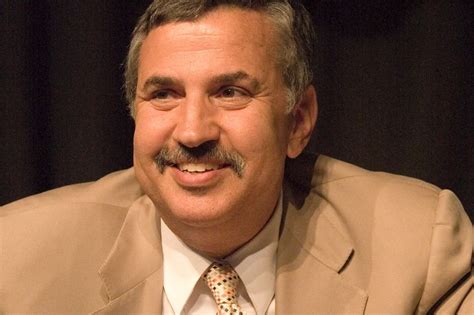In the ever-changing landscape of global economics, technology, and geopolitics, understanding the insights of renowned thinkers like Thomas Friedman is crucial for navigating the complexities of our interconnected world. As a Pulitzer Prize-winning author and columnist for The New York Times, Thomas Friedman has spent decades analyzing and interpreting the trends that shape our world. Here, we delve into 12 key insights from his work that can help individuals, businesses, and policymakers stay ahead of the curve.
1. The World is Flat
One of Friedman’s most enduring concepts is the idea that the world has become “flat.” This means that due to advancements in technology and communication, geographical distances are no longer barriers to economic competition or collaboration. Understanding and embracing this flatness is essential for success in the global economy. Businesses must be prepared to compete with peers from all over the world, while also being open to forming international partnerships that leverage diverse skills and resources.
2. Leveraging Globalization
Friedman emphasizes the importance of leveraging globalization to one’s advantage. This involves not just competing in the global market but also utilizing international resources, talent, and innovations to enhance local economic capabilities. For instance, companies can outsource certain operations to countries with specialized skills, thereby increasing efficiency and reducing costs. However, this also requires a deep understanding of cultural and regulatory differences across borders.
3. The Importance of Education and Skills Training
Given the rapidly changing job market, where automation and AI are increasingly displacing traditional roles, Friedman stresses the need for continuous education and skills training. Individuals must be adaptable, with a willingness to learn new skills throughout their careers to remain relevant in the workforce. This includes not just technical skills but also soft skills like critical thinking, creativity, and collaboration, which are harder to automate.
4. Green is the New Red, White, and Blue
Friedman argues that the movement towards green technology and renewable energy sources is not just an environmental necessity but also an economic opportunity. Countries and companies that lead in the development and implementation of green technologies will have a significant competitive advantage in the future. Investing in sustainable practices can lead to cost savings, improved brand reputation, and access to new markets and government incentives.
5. The Power of Community and Social-capital
The concept of community and social capital is vital in Friedman’s analysis. Strong, cohesive communities with high levels of social trust and engagement are more resilient and better positioned to adapt to globalization and technological changes. This is because such communities can foster innovation, support local businesses, and provide a safety net for members facing economic disruption.
6. The Role of Government in the Flat World
Friedman suggests that governments have a critical role to play in preparing their countries for the challenges and opportunities of the flat world. This includes investing in infrastructure, education, and research to create an environment conducive to innovation and entrepreneurship. Moreover, governments must navigate the delicate balance between regulation and freedom, ensuring that businesses have the flexibility to innovate while protecting workers and the environment.
7. The Difference Between Globalization 1.0, 2.0, and 3.0
Friedman identifies different eras of globalization, each characterized by the technologies and forms of collaboration that defined them. Understanding these differences is crucial for developing appropriate strategies for the current era, Globalization 3.0, where individuals and small groups can compete and collaborate on a global scale using digital technologies.
8. The Need for a “High Touch” in a “High Tech” World
In an increasingly technological world, Friedman highlights the importance of maintaining human, “high touch” elements. As automation replaces certain jobs, professions that require empathy, creativity, and human interaction will become more valuable. Companies must prioritize building strong relationships with customers, employees, and partners, recognizing that trust and loyalty are key differentiators in a competitive market.
9. CQ (Curiosity Quotient) and PQ (Passion Quotient)
In addition to IQ (intelligence quotient), Friedman introduces the concepts of CQ (curiosity quotient) and PQ (passion quotient) as essential for success in the flat world. Individuals with high CQ and PQ are more likely to be motivated to learn, adapt, and thrive in a rapidly changing environment. Cultivating these qualities involves fostering a culture of curiosity, encouraging experimentation, and supporting employees’ passions and interests.
10. The Challenge of “Too Much”
Friedman discusses the problem of “too much” - too much information, too many choices, too much connectivity - which can lead to overload and decreased productivity. Managing this overload through strategies like prioritization, filtering, and mindfulness is crucial for maintaining focus and achieving goals in a hyper-connected world.
11. Resilience and Adaptability
In a world where change is the only constant, Friedman emphasizes the importance of resilience and adaptability. This involves developing the ability to pivot in response to new information or changing circumstances, as well as cultivating a mindset that views failures and setbacks as opportunities for learning and growth.
12. The Ethical Imperative of Global Citizenship
Finally, Friedman underscores the ethical imperative of acting as responsible global citizens. This includes recognizing the global impact of local actions, supporting international cooperation, and advocating for policies that promote sustainability, equity, and human rights. As individuals and organizations operate in an increasingly interconnected world, their actions must be guided by a sense of global responsibility and a commitment to creating positive change.
In conclusion, Thomas Friedman’s insights offer a comprehensive framework for navigating the complexities of the modern world. By embracing globalization, focusing on education and skills training, leveraging technology for sustainability, and fostering strong communities, individuals and organizations can not only survive but thrive in the 21st century. As we move forward, it’s essential to integrate these insights into our personal and professional strategies, ensuring that we are equipped to face the challenges and seize the opportunities that the future holds.
FAQ Section
What does Thomas Friedman mean by “The World is Flat”?
+By “The World is Flat,” Friedman refers to the concept that the world has become a level playing field in terms of economic competition and collaboration, thanks to advancements in technology and communication that have bridged geographical gaps.
Why is continuous education and skills training important according to Friedman?
+Friedman believes that continuous education and skills training are crucial in today’s rapidly changing job market, where automation and AI are displacing traditional roles. This helps individuals remain adaptable and relevant in the workforce.
What role does government play in preparing a country for the challenges of globalization, according to Friedman?
+According to Friedman, governments play a critical role in investing in infrastructure, education, and research to create an environment that fosters innovation and entrepreneurship, thereby preparing their countries for the flat world.



